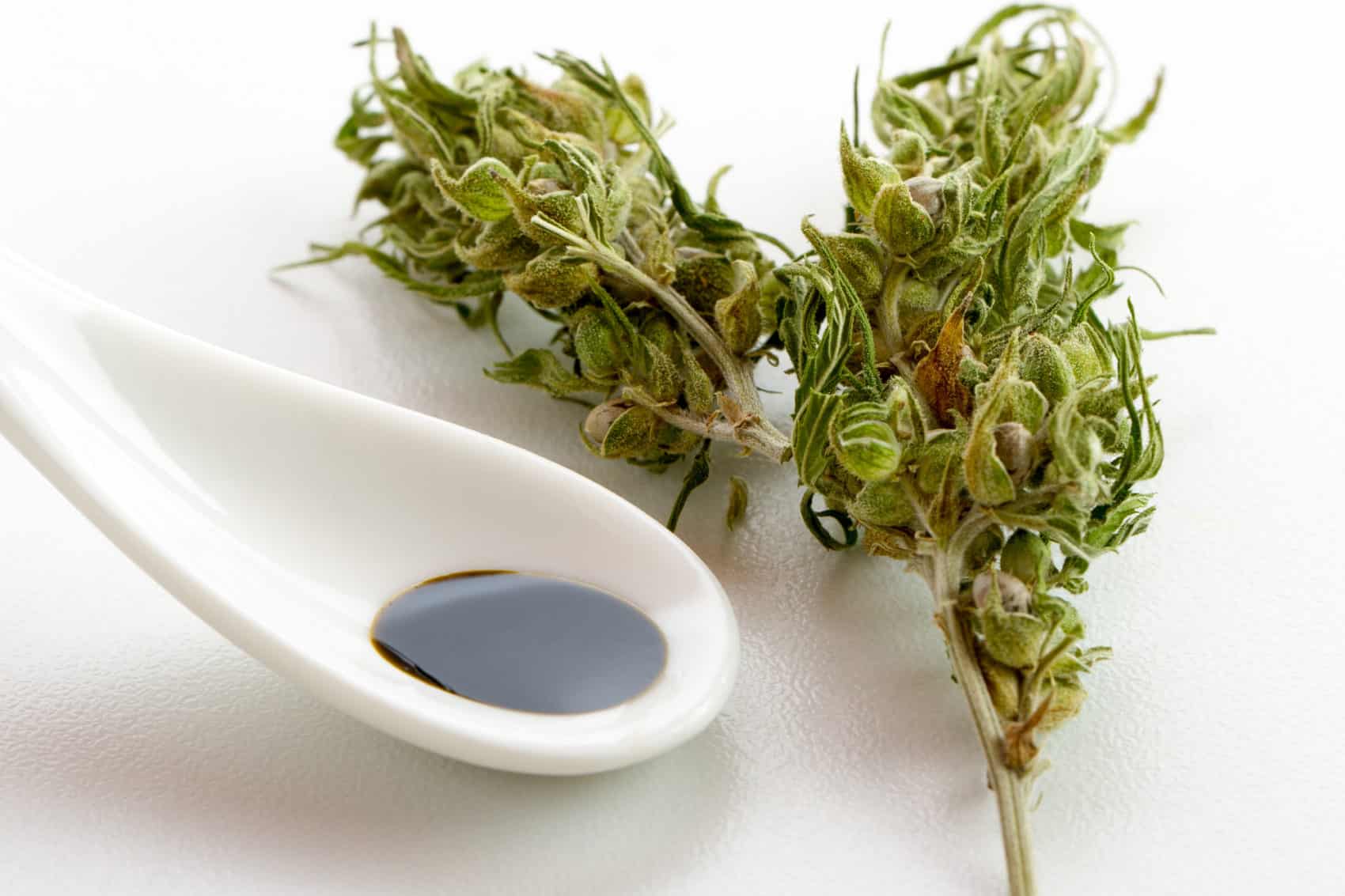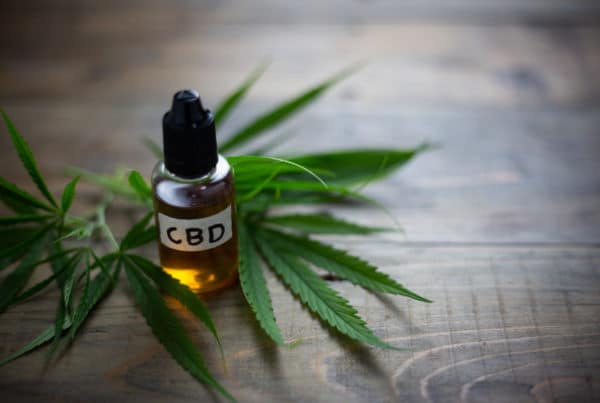The use of CBD oil for pain is on the rise. So what is CBD, why is it gaining such recognition, how does it work, and is it effective?
CBD, which stands for cannabidiol, is a compound found in plants of the Cannabis species. It is quickly dissolving stigma and becoming mainstream for the treatment of a large number of ailments, from pain to mental illness.
Over 1.5 billion people worldwide suffer from chronic pain and most will seek some form of treatment for relief. In the wake of the opioid epidemic that is sweeping the world, this safe, non-addictive, natural treatment has caught the attention of many.
If you’ve wondered if CBD oil is the solution to your pain, we’ve put together this helpful guide for you. To better understand the compound, its origins, and its effects, read on.

cbd oil for pain
What Is CBD?
CBD, or cannabidiol, is one of more than eighty known compounds derived from plants in the cannabis family. These compounds are known as cannabinoids. CBD is abundant in hemp, making up nearly forty percent of its total extracts.
These cannabinoids have important interactions with our body’s own endocannabinoid system.
CBD is the non-psychoactive cannabinoid that is used medicinally to treat a wide range of issues, including:
- Chronic pain
- Acute pain
- Depression
- Insomnia
- Seizures
- Osteoarthritis and rheumatoid arthritis
- Multiple Sclerosis
- Fibromyalgia
- Neuropathy
- Autoimmune disorders
- Inflammatory Bowel Disease
- Celiac disease
- Crohn’s disease
Cannabidiol relieves pain and reduces inflammation without any psychoactive effects, unlike the cannabinoid THC.
THC, or tetrahydrocannabinol, is the psychoactive compound found in cannabis that is responsible for the “high” associated with the use of the plant. Though THC has analgesic and other medicinal properties, it’s still illegal in many places because of its mind-altering effects.
CBD does not affect a person in the same way that THC does. This is why it is considered safe for everyday therapeutic use.
CBD and the Endocannabinoid System
To understand CBD and its actions in the body, it’s helpful to have an idea of what the endocannabinoid system is and how CBD interacts with it to reduce pain and inflammatory response.
All vertebrates have an endocannabinoid system. This system plays a key role in regulating many processes, both physiological and cognitive. The endocannabinoid system is involved in:
- Appetite regulation
- Mood regulation
- Memory
- Fertility and fetal development
- Perception of pain
- Blood pressure
- Inflammatory response
This isn’t a comprehensive list, as the study of the endocannabinoid system is relatively new. What is understood is that this system is part of the body’s integrated approach to maintaining a stable internal environment despite changes in the external environment. This delicate but essential balance is known as homeostasis.
The endocannabinoid system involves three main integrated components:
- The body’s own endocannabinoids, also called endogenous cannabinoids, which are cannabinoid-like compounds produced naturally by the brain
- Cannabinoid receptors throughout the body that receive these endocannabinoids
- Enzymes that are responsible for the creation or destruction of endocannabinoids
The body uses this integrated system of enzymes, endocannabinoids, and receptors for cell and tissue communication. This communication allows for the proper regulation of many biological responses.
The receptors of the endocannabinoid system are known as CB1 and CB2 receptors.
CB1 Receptors
CB1 receptors are found mainly in the:
- Nervous system, including the brain
- Connective tissues
- Reproductive organs
- Glands
- Parts of the reproductive, gastrointestinal, and urinary tracts
CB1 receptors are found in the greatest concentrations in these brain and nervous system regions:
- Cerebellum, which regulates motor control
- Basal ganglia, which is involved in movement coordination
- Hippocampus
- Specific regions of the spinal cord
These areas of abundance explain why cannabinoids affect memory, pain perception, and movement (motor) control.
CB1 concentration is lower in the brain stem, which may explain why sudden death caused by slowed respiration is not associated with cannabis use.
CB2 Receptors
CB2 receptors are found mainly in the immune system and its associated cells, tissues, and organs. They’re also found in other organs and structures throughout the body. This includes:
- Tonsils
- Spleen
- Liver
- Kidneys
- Heart
- Blood vessels
- White blood cells
- Endocrine Glands
- Bones
- Reproductive organs
- Keratinocytes
CB2 receptors are located mainly in peripheral tissues instead of the tissues of the central nervous system. CB2 receptor abundance in the immune system indicates their essential role in inflammatory response.
These receptors are stimulated and controlled by cannabinoids, whether they are the body’s endocannabinoids or cannabinoids from an outside source.
Our body makes cannabinoids such as anandamide, which is the endocannabinoid responsible for the famed “runner’s high.” Ingesting plant-derived or synthetic, laboratory-made cannabinoids elicits similar responses throughout the body. This is because these cannabinoids “fit” our endocannabinoid system receptors.
Cannabinoids augment the endocannabinoid system by mimicking the behavior of endocannabinoids. As cannabinoids interact with the CB1 and CB2 receptors, they can stimulate a number of physiological processes.
CBD and Cytokines
One important endocannabinoid function appears to be involvement in cytokine release regulation. Cytokines are small proteins such as interleukin, interferon, and growth factors that are released by immune system cells. Cytokines regulate communication and interactions between these immune cells.
Cannabinoids appear to reduce the production and release of cytokines that promote inflammation.
CBD as an Antioxidant
CBD also protects the nervous system and other cells with its powerful antioxidant properties. Antioxidants protect cells and their DNA from free radicals that cause oxidative damage.
Excessive free radicals can lead to many diseases, from cancer to heart disease. Stabilization of free radicals can help prevent painful conditions from occurring in the first place.
CBD Aids Anandamide Function
Although further research is necessary, the anti-inflammatory action of some cannabinoids, CBD included, doesn’t seem to directly involve the CB1 or CB2 receptors.
One mechanism of CBD is the suppression of a fatty acid called hydrolase. Hydrolase is an enzyme that is responsible for breaking down the body’s endocannabinoid anandamide. Because it is broken down more slowly in the presence of CBD, the body can use the anandamide more easily.
Anandamide helps the body regulate appetite, memory, sleep patterns, ovulation, and pain. CBD allows the body more time to use its own endocannabinoid anandamide before it’s destroyed. Anandamide then binds to endocannabinoid receptors, regulating body processes and controlling pain.
Other Effects on the Endocannabinoid System
The interaction of CBD with our endocannabinoid system has many notable effects. Some of the functions of CBD include:
- Increasing CB1 receptor density, augmenting the effects of any cannabinoids that will bind to the CB1 receptors
- Behaves as an inverse agonist of CB2 receptors, which reduces cannabinoid effects that dull the response of CB2
- Is a 5-HT1a (serotonin) receptor agonist in the brain, giving it the ability to induce calm without unpleasant pharmaceutical side effects
- Behaves as an antagonist for the little-understood GPR55 receptor, which is an aspect of the endocannabinoid system still being studied
This understanding of CBD oil for pain use only scratches the surface. There is still much to be learned about its intricate, complicated interactions with one of the body’s most important systems.
What Is CBD Oil?
CBD oil is extracted cannabidiol that is then added to a carrier oil for consumption. Most CBD is extracted from industrial hemp plants, which are high in the compound. The most common carrier oils for CBD are hemp, liquid coconut, and olive oils.
Cannabinoids are fat soluble, which means they are broken down and stored in fat, not water. Because they’re fat soluble, cannabinoids like CBD are more effective when consumed with some type of fat.
Consuming cannabinoids with fat increases the bioavailability of these compounds. That said, it’s important to note that the type of fat used may increase this bioavailability even further.
MCTs and CBD Absorption
Liquid coconut oil may be one of the best carrier oils for CBD. The science behind this oil’s effectiveness is based on several factors.
Saturated fats appear to be the most effective carriers for cannabinoid absorption. Since coconut oil is almost eighty percent saturated fat, cannabinoids can be processed more quickly by the body when taken with it as the carrier oil.
Coconut oil is made up mostly of medium-chain triglycerides, or MCTs. These MCTs are directly metabolized by the liver into energy. Since these fatty acids take a quick, direct path to the liver, accompanying cannabinoids are quickly released during the process.
Does CBD Oil Contain THC?
Most commercial CBD oil derives from hemp instead of cannabis. Regulated Help typically contains a maximum THC level of 0.3%. This negligible amount of THC makes it nearly impossible for the user to feel a “high” after use.
Also, CBD is a THC antagonist. CBD doesn’t fit receptors entirely like THC, so the molecules only partially fill receptors, effectively blocking THC from binding to them. Because THC is blocked, the negligible amount of it present in hemp is rendered useless.
Is CBD Oil Legal?
Even though it is non-psychoactive and legal to use, years of misinformation have reinforced the stigma around hemp and cannabis.
As our understanding of this unique cannabinoid grows in society, CBD oil for pain will become more widely available for those who need it.
CBD Oil for Pain Control
Though the number of symptoms and conditions treated with CBD are rising, it’s main use is still for treating pain. This is especially the case with chronic pain.
CBD versus Opioids
Chronic pain can be difficult to treat with traditional medicines. Opiate and opioid drugs perpetuate as the most frequently prescribed medicines for pain. Their effectiveness is questionable, however. Additionally, these drugs require frequent dose increases and carry the risk of serious, dangerous addiction.
Opiates and opioids work on receptors in the brain to control pain perception. The body quickly adjusts to their effects, developing a tolerance and dependence on the medicine.
Increased dosages of opioid drugs alter the brain so that it functions normally with the drugs and abnormally without them. This brain alteration results in opioid tolerance, which is the need to use greater amounts of the drug to achieve the same effect. It also results in drug dependence, which means a greater susceptibility to experiencing unpleasant withdrawal symptoms.
Using CBD oil for pain doesn’t carry the same risks for tolerance, dependence, or addiction. Cannabidiol’s influence on inflammatory responses and indirect influence on anandamide’s effectiveness alleviate pain. It doesn’t desensitize receptors like opioids.

CBD Oil for Pain versus Anti-inflammatory Drugs
Cannabinoids interact with receptors throughout the body to control pain. CBD, in particular, appears to have a huge influence over an inflammatory response. This influence actually reduces the inflammation that would cause pain instead of only controlling the body’s response to discomfort.
There are other pharmaceutical drugs that aim to reduce inflammation, such as NSAIDs and aspirin. These drugs carry their own significant risks, especially with frequent use. These risks include gastrointestinal and liver damage.
Taking CBD oil for pain doesn’t appear to present any of these risks, yet is effective at halting inflammatory responses that cause discomfort and tissue damage.
CBD and Stress
Stress is worth mentioning when discussing pain, especially in chronic conditions. Stress has a powerful impact on the ability of your body to regulate pain. As your stress increases, so does your discomfort.
Studies have shown that cannabinoid receptor activation within certain areas and structures of the brain can lower stress-related blood pressure and heart rate responses. This regulation of physiologic responses to stress in turn reduces feelings of panic and anxiety.
This nerve-calming quality of CBD oil for pain has a ripple effect. As bodily responses become controlled, so are stressful feelings. Reduced stress leads to a decrease in pain sensitivity.
CBD Treatment for Painful Conditions
CBD treats a wide range of painful diseases and disorders, providing reliable relief and a better quality of life to sufferers. Those who use CBD oil for pain can function better and can avoid potent pharmaceutical medicines.
CBD shows promise as an effective pain management and inflammation control agent for those who suffer from autoimmune disorders, cancer, heart disease, arthritis, and other ailments.
Even injuries old and new can be safely treated with CBD oil. This makes it especially useful for athletes, laborers, those with chronic back pain, and the elderly.
Using CBD Oil For Pain
If you suffer from pain and have found that traditional treatments don’t always work, CBD may be the answer.
It may take some time for you to learn what doses your body requires for pain relief. Once you have established a dose and concentration that works, you’ll enjoy the many health benefits of this amazing oil.
CBD is quickly becoming a household name for treating pain and neurological disorders.
Contact us to learn more about our services and feel free to explore our blog.







